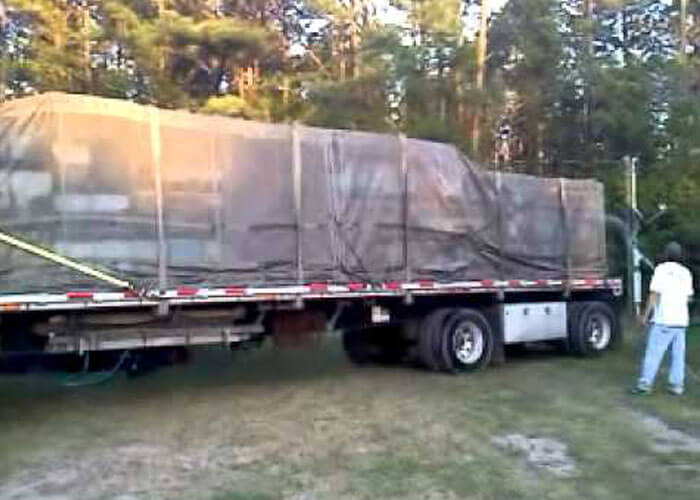Bee Haulers Face Challenges On The Road

We’ve heard of some crazy loads… but this one might be near the top of the list. It’s a relatively well-known fact that the pollination process is necessary for crop and food production. But have you ever wondered how farmers are able to pollinate their huge fields of crops? It may seem a little surprising, but truckloads full of beehives are shipped across the country from farm to farm in order to pollinate mass crop populations (specifically nuts, berries, fruits, and vegetables).
Could you imagine loading and unloading a load like that? We’re talking nearly 500 hives containing somewhere along the lines of 25 million bees at a time. Due to a bee disease called “colony collapse disorder,” bee colonies are rapidly dying off causing a huge uptick in the amount of bees being shipped across the country.
It’s not a simple process either. The beehives must be loaded onto a flatbed using a forklift, and then covered with a net or tarp in order to keep the bees inside. One of the biggest dangers of bee hauling is dealing with the heat. Bees can easily overheat and die while out on the road. To combat this, bee haulers are actually responsible for cooling down the bees with a water sprayer that’s hose is typically attached to the underside of the trailer – some haulers are lucky enough to have installed sprinkler systems. Drivers also have to be aware that stops can only last a few minutes before heat becomes a deadly issue – fuel has to be purchased by night. Water or smokers can be used to calm bees that are angry about a shifting load, or before the nets and tarps are removed and the hives are unloaded. – Bee haulers will obviously also need to be equipped with their own bee suits.
On long loads the bees also have to be fed. Since they are unable to escape the nets and tarps – the bees are unable to search for nectar in order to produce honey for the hives. Oftentimes it is the hauler’s responsibility to feed the bees (usually sugar syrup – a substitute for honey). On extremely long loads it occasionally necessary to utilize a reefer in order to keep the bees cool enough. However, this method is only used during the spring and fall, when the core temperature of the bees and their hives are naturally lower.
Another serious issue with bee hauling is the occasional escape. Whether this happens due to an unsecured area of netting, or a rollover accident – escaping swarms of millions of bees can be a nightmare for everyone around. Check out this footage of a swarm that’s escaped due to a rollover
Sources
Live Science
Mid-Atlantic Apiculture Research
Vanishing Of The Bees
busybeecharles
lacofdfireman